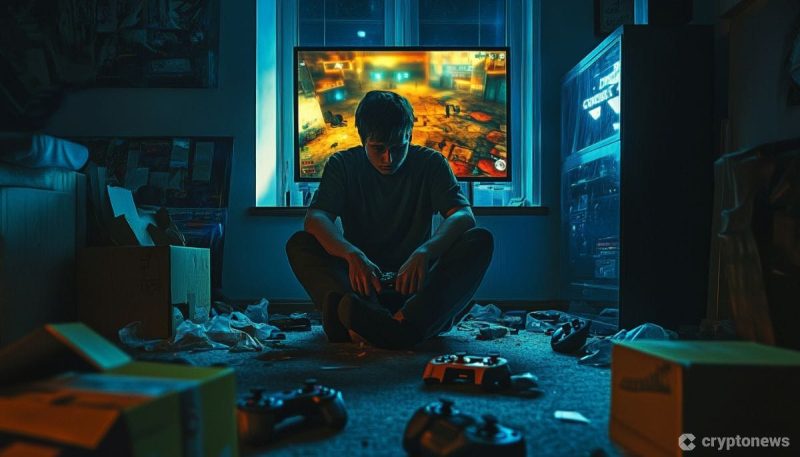Key takeaways:
Play-to-airdrop games have been criticized for attracting profit-driven players who use bots to automate gameplay and accumulate points. The model is accused of crowding out real gamers, undermining the integrity of the game, and devaluing the airdropped assets. To prevent abuse, developers suggest implementing anti-bot measures such as CAPTCHA tests and multi-factor authentication.Play-to-airdrop (P2A), the latest iteration of web3 gaming, has come under fire for attracting profit hunters.
Play-to-airdrop is a strategy to attract users by giving away crypto tokens—called airdrops—directly to their wallet addresses. Users can then sell these tokens for cash on crypto exchanges. To receive the tokens, they must complete certain activities in the game.
People who have been in gaming for a long time believe that P2A games are replete with players who are looking to make a quick buck rather than enjoying the game.
These so-called degens typically use bots to autoplay games, accumulate points, cash out, and chase the next token. According to developers and players, the gold rush is crowding out traditional gamers—who value the fun of playing and the social aspects of the game—from web3’s airdrop era.
Mohsin Waqar, CEO of the game development platform Senet, said the play-to-airdrop model offers developers “significant benefits” for building player engagement and “fostering a sense of community.” However, he said the model is also prone to exploitation by bots and profit-hunters.
“Bots can be programmed to complete simple tasks or farm rewards automatically, undermining the integrity of the game and the value of the airdropped assets,” Waqar told Cryptonews, adding:
“Profit-seeking players may engage in strategies like creating multiple accounts (sybil attacks) or using bots to farm rewards, which can inflate the supply of airdropped tokens and devalue them.”
Play-to-Airdrop Criticized as ‘Gambling’
On the one hand, “airdrop hunters” are part of the developers’ broader game plan. Play-to-airdrop uses speculation to market video games to people who might otherwise avoid them.
On the other hand, the quality and sustainability of P2A gameplay depend on converting the “gold diggers” into committed players. After initially drawing in those who are new to the game, developers must make them stay to give the studio its long-term business and cultural footprint.
Manel Sort, the CEO of Games for a Living, believes that P2A is a hard sell. “The use of random and unexpected bonuses in P2A dynamics hook the players, but they also blur the lines with gambling techniques,” Sort, who says to have built and published over 60 titles, told Cryptonews.
“I believe game developers in the web3 space have to decide whether they want to get involved in the gambling space or whether they bet on innovation and fresh approaches to engage the players long-term,” he added.
Game developer Jandindr argued in a post on X that the current form of P2A is not sustainable for studios. “Token should be used to give to your best quality players to retain/ new users where the cost make sense. Now you are spending $100 to get the worst possible user group (sic),” he said.
One of the most anticipated airdrops relates to the TON-based game Hamster Kombat, which claims to have over 300 million active players. On Aug. 28, the team finally announced that the token generation event (TGE) and subsequent airdrop will take place on September 26th.
The reveal ended months of waiting, as the airdrop, originally set for July, was pushed back to August. At the time, the team said it was fine-tuning its tokenomics—a combination of the words “token” and “economics” used to define the elements that make a cryptocurrency valuable.
In August, however, the Hamster Kombat team announced that it would not set a specific date due to the size of the event. It described the event as a “technically complex undertaking, unprecedented in the blockchain world.”
“Many P2A games have struggled because their tokenomics models are poorly implemented,” Juan Humberto Vivas Lovera, founder and CEO of web3 platform Pixpel, said in an interview with Cryptonews.
“The complexity of web3 games, involving both digital assets and tokenomics, necessitates that tokenomics be adjusted according to game dynamics and how funds are being utilized,” Lovera added.
According to its whitepaper, Hamster Kombat will allocate 60% of its token’s total supply to players as a reward for tapping the screens of their smartphones and completing other in-game tasks like watching YouTube videos.
But even before its airdrop, Hamster Kombat was already facing legal actions from alleged early investors who supposedly created the game, per Russian media reports. It is unclear whether the legal battle over Hamster Kombat’s origin will affect the airdrop.
The project previously said that it turned down investments from venture capitalists to protect users who received the airdrop from becoming “exit liquidity.”
How Game Studios Can Reward Quality
Mohsin Waqar, the Senet CEO, said developers need to implement anti-bot measures, such as CAPTCHA tests and multi-factor authentication, to prevent abuse in P2A. The GameFi veteran, whose company boasts over 600 games, 300,000 daily downloads, and three million monthly users, also proposed limiting the number of accounts per user and monitoring suspicious activity using artificial intelligence (AI).
Waqar suggested “tiered rewards, where more valuable airdrops are only accessible to players who demonstrate consistent and meaningful engagement.”
Some of his proposals have been tested and have had some success at Alien Worlds. Waqar said the blockchain-based metaverse game struggled with bots farming points and players creating multiple accounts to maximize airdrop rewards.
Alien Worlds responded by implementing stricter account verification processes and transaction cooldown periods to reduce exploitation. Developers also changed the reward distribution mechanics to make it harder for bots and exploiters to profit without real engagement.
Lovera, the Pixpel founder, spoke about the need for a digital ID-enabled wallet, like Concordium. This will ensure there is one person behind the screen rather than bots. He also suggested a tokenomics model based on tournaments, whereby players can lose tokens if they lose the game or tournament.
Nothing Beats a Good Game
A Philippines-based gamer, who preferred to be called Lupin XIV, said that P2A is easier to exploit if there are fewer barriers to entry, if it is referral-based, and if eligibility requires minimal verification.
While bad actors are inevitable, P2A games must attract more committed players to create a balanced gaming economy. When invested participants take up more space in the community, it reduces the likelihood of abuse. Lupin XIV told Cryptonews:
“The gaming experience will play a key role in P2A for both true fans and profit-driven players because a certain percentage of profit-hunters can be converted to long-term players if there are game loops, player progressions, fewer exploits, and token sustainability.”
Ultimately, nothing beats a good game. “The one way to attract players is to create a compelling game that they will stick to regardless of incentives and airdrops,” Lupin added.
“Developers must recognize that the quality of the game will always have greater importance for the majority of gamers than the rewards offered,” Lovera concurred.
Why Play-to-Airdrop?
It’s not all doom and gloom for play-to-airdrop games. In web2 gaming, enthusiasts provided valuable beta insights that contributed to community-building and game development. However, developers largely controlled ownership and profit.
The play-to-earn (P2E) model, popularized during lockdown, used blockchain technology to shift power from developers to gamers. P2E rewards players with money, in-game items that enhance their virtual experience, and non-fungible tokens (NFTs) that give them ownership of these assets.
P2A builds on P2E by adding speculation as a new selling point. Developers leverage the appeal of accumulation and the element of surprise to promote new games. Experts say there are several benefits of the play-to-airdrop model, including:
Increased game time: Rewards are given to players who stay engaged over the long term. Since gamers often don’t know when an airdrop will happen, they remain committed in anticipation. Virality: The uncertainty around reward details creates buzz and drives interest through engaging narratives. Diverse player base: In addition to web2 purists, P2A attracts players who might be interested in speculation. This diverse group may also stay to enjoy the game.“By offering airdrops as rewards, developers can attract a diverse range of players, including those who may be new to blockchain gaming,” explained Senet’s Waqar.
“This approach can help build a loyal community that is invested in the game’s ecosystem, leading to greater longevity and a more stable economy – IF done right.”
The post How Play-to-Airdrop Gold Rush Is Killing Fun for True Gamers appeared first on Cryptonews.


